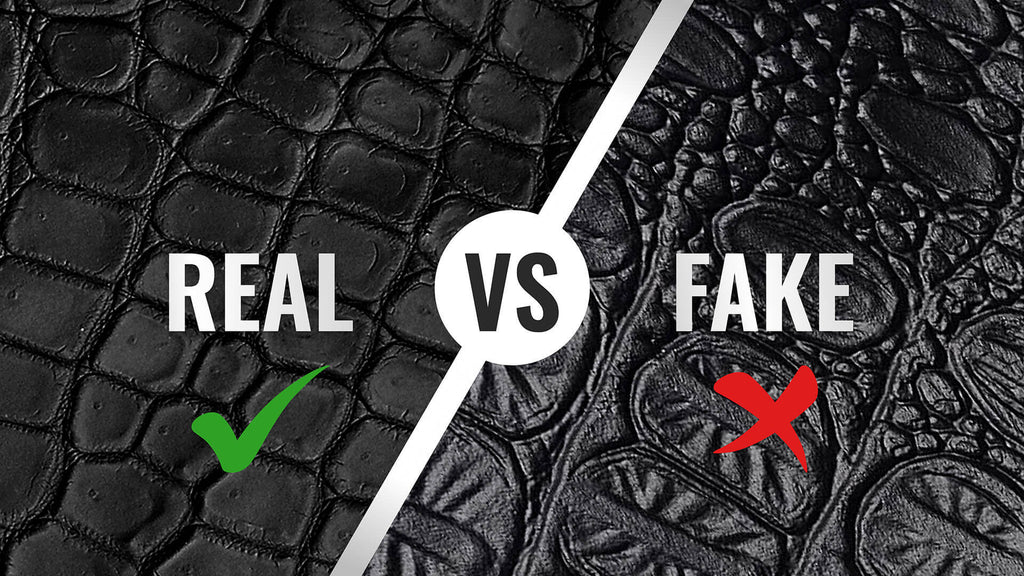A Style-Savvy Guide to Spotting Authentic Craftsmanship
In the world of fashion and accessories, leather holds a place of prestige—admired for its timeless aesthetic, durability, and unique character that only improves with age. But in an age of fast fashion and lookalike materials, telling the difference between real leather and its synthetic counterpart can be a challenge, even for the style-savvy.
Whether you’re investing in a classic handbag, a travel accessory, or a leather jacket, knowing how to identify the real thing is not just about quality—it’s about craftsmanship, longevity, and value. Here's how to tell if what you're holding is truly leather or just a clever imitation.
1. Look Closely at the Surface Texture

Real leather has an irregular, natural grain. It may show tiny pores, slight wrinkles, or variations in color and pattern. These are not flaws—they’re signs of authenticity. Each piece is one-of-a-kind, shaped by the life of the hide it came from.
Fake leather often looks too perfect. The grain is usually uniform and consistent, sometimes with a plastic-like sheen. If the surface feels overly smooth or looks identical across the entire product, it’s likely synthetic.
Tip: Natural imperfections are a hallmark of the real thing. If it looks flawless, look again.
2. Test the Touch

Genuine leather feels warm, flexible, and slightly textured. When you press into it, it gives a bit and shows creases—like skin.
Faux leather tends to feel cold, stiff, or overly smooth. Pressing into it may not leave a lasting impression, and the surface may feel more like vinyl or plastic.
Tip: Let your fingers be your guide—real leather has a softness and give that synthetics can't replicate.
3. Smell the Difference

One of the most distinct identifiers of real leather is its scent—rich, earthy, and unmistakably organic. It's a natural aroma that synthetic materials have tried (and failed) to imitate for decades.
Fake leather often smells like chemicals, plastic, or nothing at all. If you're in a store, take a discreet sniff—it’s one of the quickest giveaways.
Tip: If the item smells synthetic, it probably is.
4. Examine the Edges

Real leather typically has rough, fibrous edges. Because it’s made from animal hide, the cut edges may look slightly uneven or textured.
Faux leather usually has smooth, sealed, or plastic-looking edges. Manufacturers often finish synthetic products with perfect trimming to conceal the artificial base.
Tip: Flip the item over or look closely at a seam—edges often reveal the truth.
5. Pay Attention to Labels and Price

Quality leather goods are rarely inexpensive. While price alone doesn’t guarantee authenticity, genuine leather comes at a cost—for good reason. The labor, tanning process, and craftsmanship involved are significant.
Look for labels that say "Genuine Leather," "Full-Grain Leather," or "Top-Grain Leather." Be wary of vague terms like "man-made material" or "synthetic leather."
Tip: If it seems too affordable to be true, it probably is.
6. The Water Test (Use With Caution)

A discreet drop of water on real leather will usually absorb slightly, darkening the spot temporarily as the leather takes in moisture.
Fake leather will repel water, and the drop will likely just sit on the surface.
Caution: Don’t do this on store items or delicate pieces—it’s best reserved for personal testing at home.
Why It Matters
Distinguishing real from fake isn’t about being elitist—it’s about making informed, conscious choices. Genuine leather offers durability, sustainability (when sourced responsibly), and timeless appeal. Imitation leather may work in certain fast-fashion contexts, but it lacks the soul, strength, and story of the real material.
In an age of refined minimalism and thoughtful wardrobes, investing in authentic pieces means choosing quality over quantity—and understanding what you’re paying for.
Real leather tells a story. It evolves with every journey, softens with every touch, and ages into something uniquely yours. By learning to distinguish it from its synthetic substitutes, you empower yourself to shop smarter, wear longer, and celebrate craftsmanship at its finest. True style isn’t just about what you wear—it's about knowing what it’s made of.
